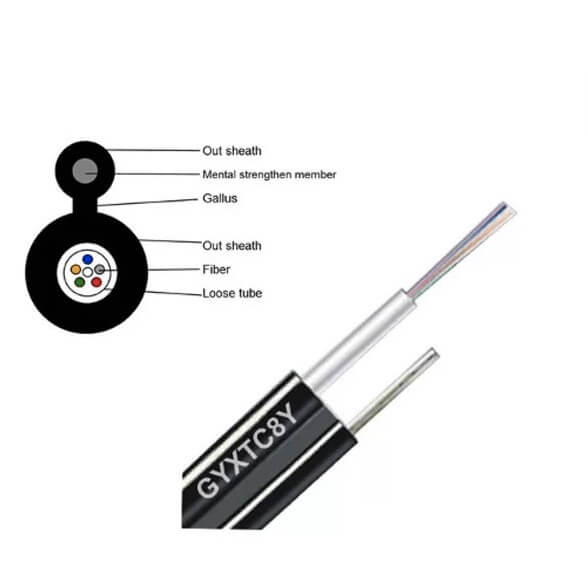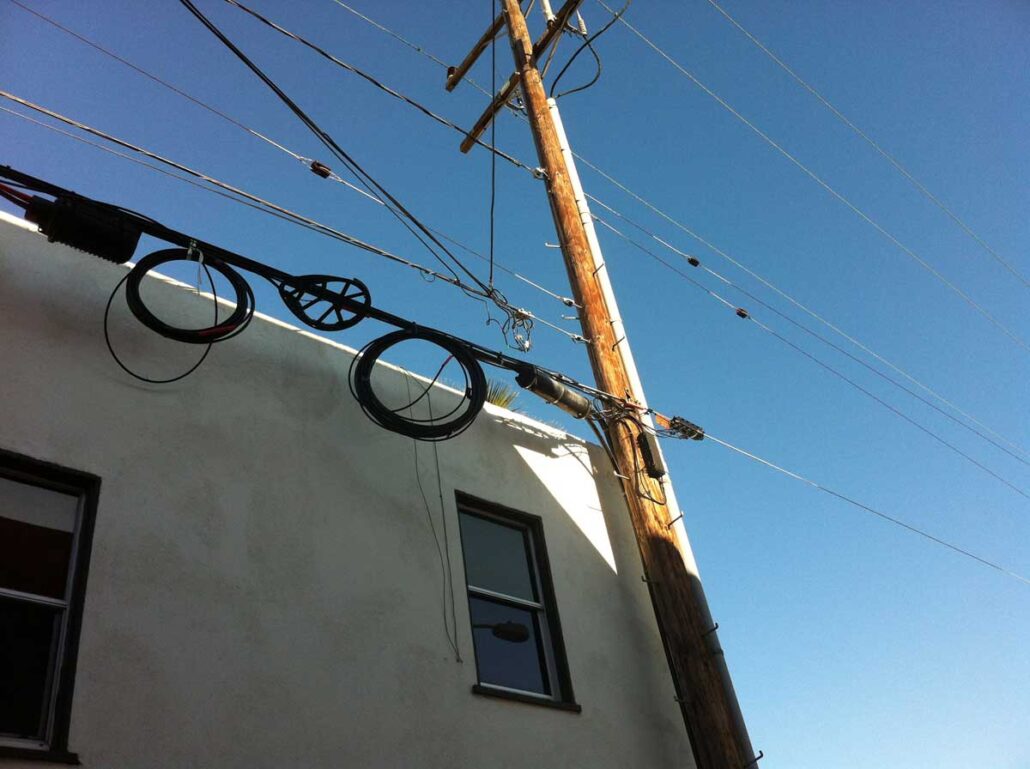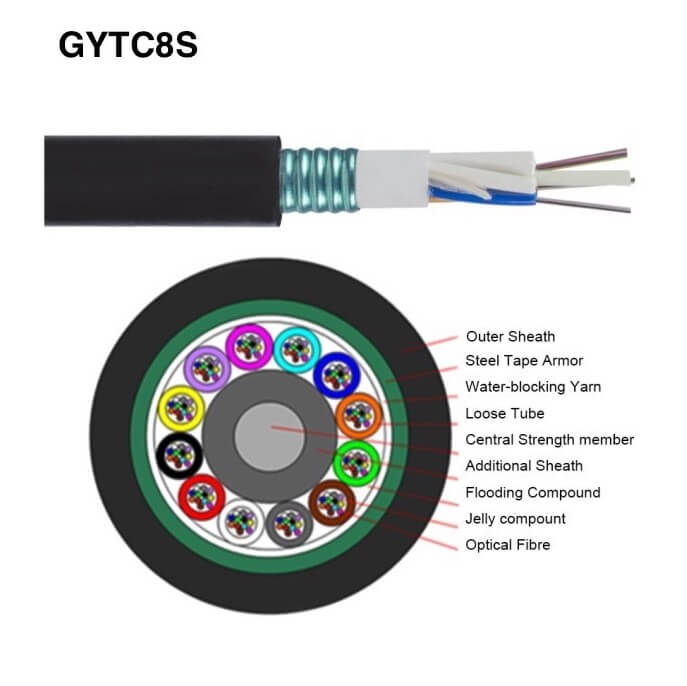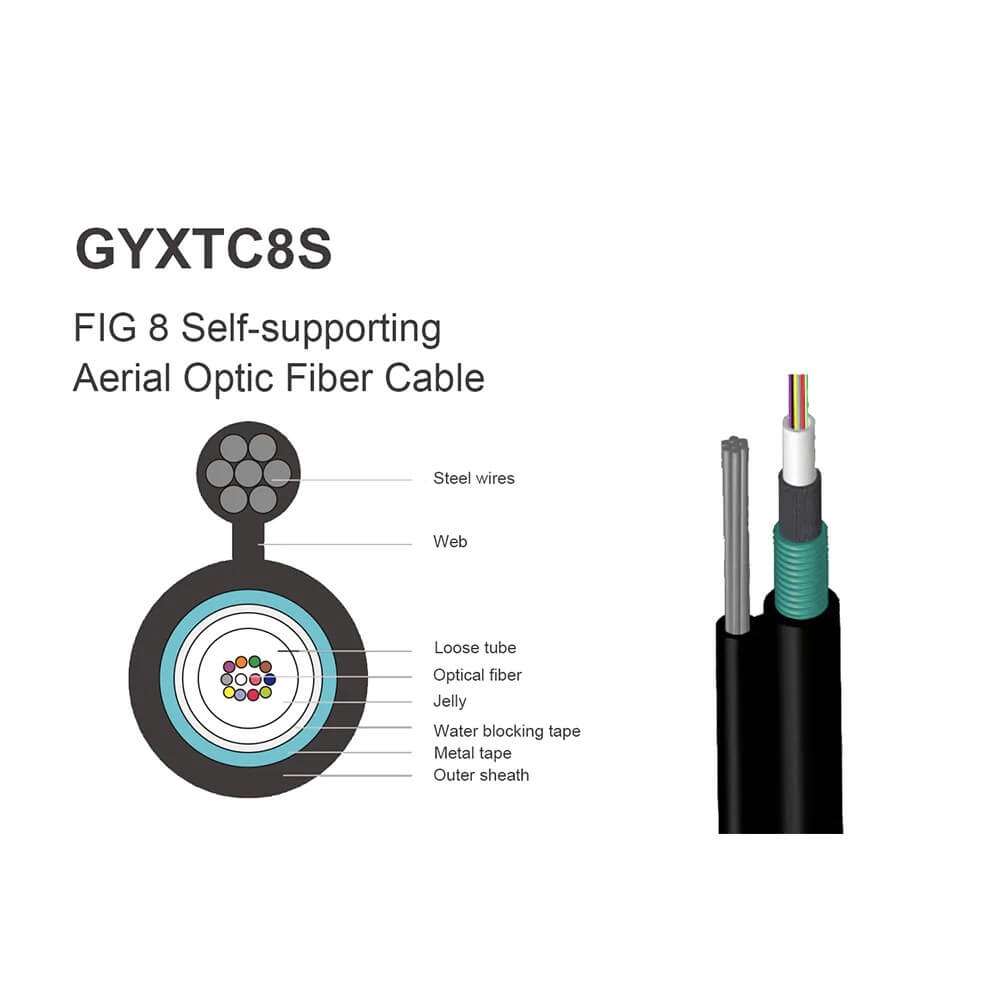Aerial fiber optic cables are very common in optical communications today. We can often see overhead fiber optic cables hanging on utility poles. Aerial fiber optic cables are available in a variety of designs to suit different types of overhead applications. This article can help you learn more about aerial fiber optic cable types.
What is an Aerial Fiber Optic Cable?
Aerial optical cables are optical cables that are hung on poles. This laying method can use the original overhead open wire pole road, saving construction costs and shortening the construction period. Aerial fiber optic cable is an insulated fiber optic cable, usually containing all the optical fibers needed for a telecommunications line, which is suspended between utility poles or power pylons, as it can even be tied to steel wire rope slings with small gauge wires. The strands are tensioned to bear the weight of the cable for the span length, and it is used for any climatic hazard such as ice, snow, water and wind. The aim is to keep the stress on the fiber optic cable as low as possible while keeping the sling and cable from falling for safety.

Aerial Fiber Optic Cable Types by Installation Method
According to the installation method, aerial optical cables can be divided into two types: self-supporting and catenary.
- Self-supporting Aerial Cable: The fiber optic cable of the self-supporting cable is connected to an insulating steel or fully insulated messenger to provide support. Examples of self-supporting aerial cable types include all-dielectric self-supporting (ADSS) and figure 8 cables. ADSS is an all-dielectric (no metal components inside the cable) self-supporting cable. It is usually used with power lines, or in areas where lighting often occurs, and the figure 8 self-supporting sling is a steel strand, which is metal, and in the structure of the figure 8 cable, the central strength member can be steel wire or FRP. Aerial cables that are not self-supporting need to be suspended below the sling.
- Catenary Wire Aerial Cable: A catenary wire aerial cable is a common outdoor loose-tube fiber optic cable that can be tied to a sling or another fiber optic cable (common in CATV).
Aerial Fiber Optic Cable Types by Structure and Material
According to the structure and material of the overhead optical cable, it can be divided into three main types: GYTC8S, GYXTC8S and GYXTC8Y.
- GYTC8S Aerial Fiber Optic Cable: GYTC8S is a typical self-supporting outdoor optical cable. It is suitable for overhead and ducted as well as buried applications. It provides excellent mechanical and environmental performance. Steel wire reinforcement ensures tensile strength. Corrugated steel belt, PE outer sheath ensures compression resistance. A water-blocking system improves waterproof ability. It has a small diameter, low dispersion and attenuation characteristics.

- GYXTC8Y Aerial Fiber Optic Cable: GYXTC8Y is a lightweight self-supporting fiber optic cable with a figure 8 cross-section, suitable for installation in overhead environments for long-distance communication, pipeline and buried applications. It offers hydrolysis resistant high strength loose tube, excellent mechanical and environmental properties. It has a small diameter, low dispersion and attenuation, medium density polyethylene (PE) jacket and low friction installation characteristics.

- GYXTC8S Aerial Fiber Optic Cable: GYXTC8S is also suitable for long-distance communication when installed in the overhead environment. It offers excellent mechanical and environmental performance, corrugated steel tape and PE outer jacket for crush resistance, and water blocking system for improved water resistance. It has a small diameter, low dispersion and attenuation characteristics.

Summary
There are so many types of aerial fiber optic cable, how to choose? Here are some tips for reference.
- Catenary Wire Aerial Cable: This method is simple, cheap, more stable, and less maintenance work, but it is time-consuming to add hooks and organize, or a special wrapping machine is required.
- Self-supporting Aerial Cable: The self-supporting overhead method has high requirements for the line trunk, difficult construction and maintenance, and high cost.
- Aerial Fiber Optic Cable Material: In lightning-prone areas, mountainous areas, high-voltage power grid areas and many areas, it is recommended to use non-metallic aerial optical cables.
- Aerial Fiber Optic Cable Structure: GYTC8S is stranded loose tube aerial cable. Extremely flexible and economical, this cable is ideal for low fiber count applications. GYXTC8Y and GYXTC8S are center loose tube aerial cables. The central tube minimizes the amount of labor and material required to install the cable.
Bonelinks provides aerial fiber optic cable types with all kinds of installation methods, structures and materials. Contact us if you want to know more.






